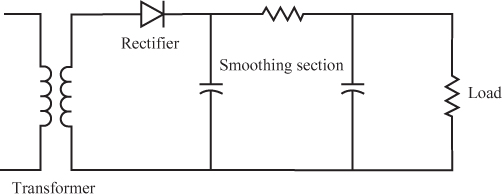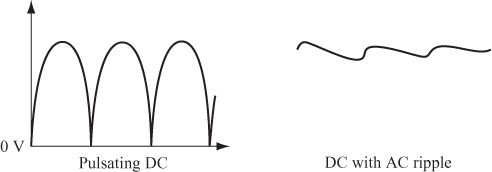Level DC (Smoothing Pulsating DC)
14 A basic power supply circuit can be divided into four sections, as shown in Figure 11.31.
15 The function of the smoothing section of a power supply circuit is to take the pulsating DC (PDC) and convert it to a “pure” DC with as little AC “ripple” as possible. The smoothed DC voltage, shown in the illustration on the right in Figure 11.32, is then applied to the load.
The load (which is “driven” by the power supply) can be a simple lamp or a complex electronic circuit. Whatever load you use, it requires a certain voltage across its terminals and draws a current. Therefore, the load has a resistance.
Usually, the voltage and current required by the load (and, hence, its resistance) are known, and you must design the power supply to provide that voltage and current.
To simplify the circuit diagrams, ...
Get Complete Electronics Self-Teaching Guide with Projects now with the O’Reilly learning platform.
O’Reilly members experience books, live events, courses curated by job role, and more from O’Reilly and nearly 200 top publishers.



